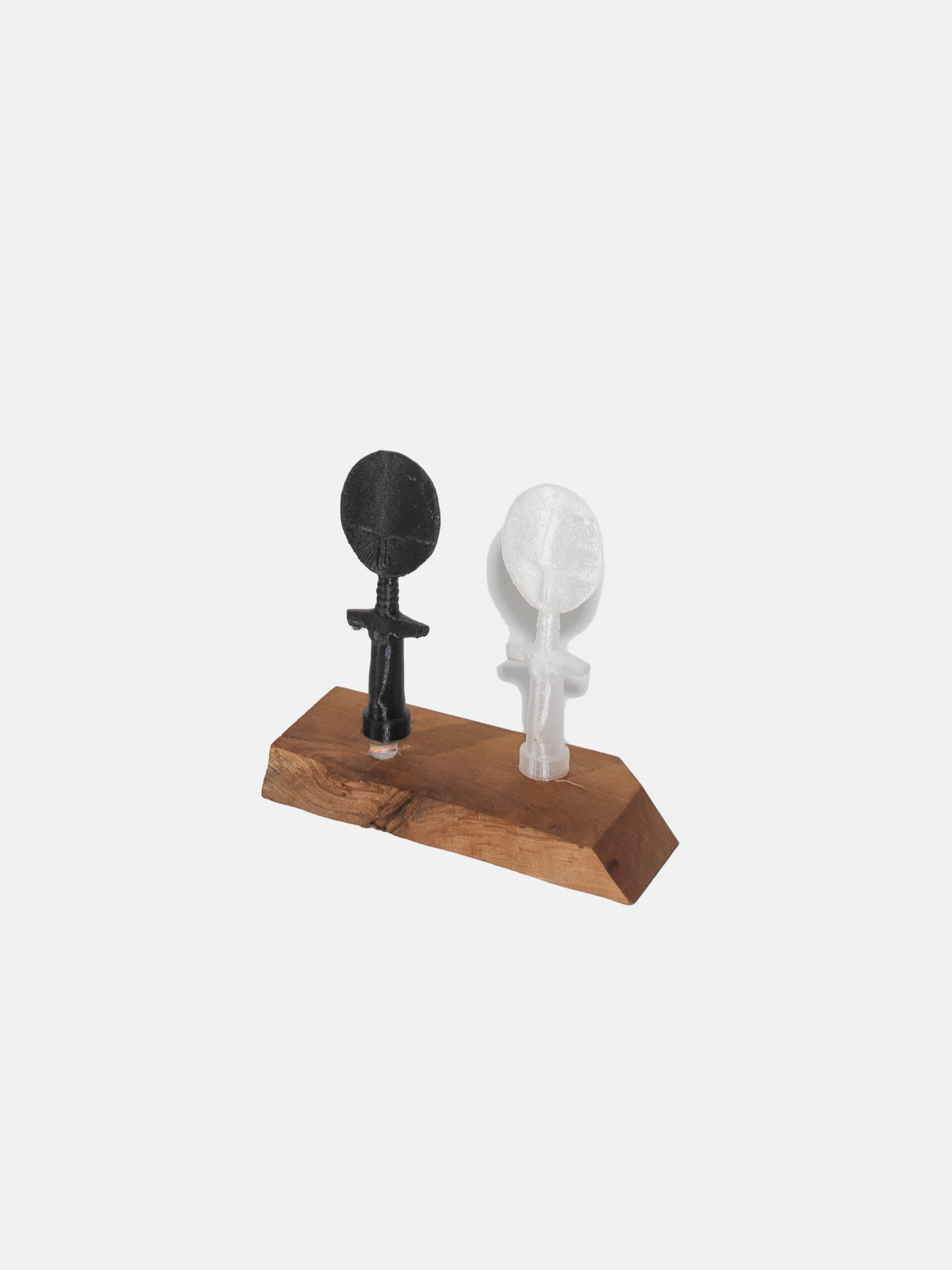Akua ba Figures
Rob Andrade
Akua ba Figures, 2017
3D-printed PLA plastic, wood
Cabinet of Curiosities, Ruane Center for the Humanities, Second Floor
About the Work
These disk-headed Akua ba fertility figures are one of the most recognizable forms in African art. The Akan people of present-day Ghana idealized a high oval forehead, and the rings around the necks of the figures are a standard convention for rolls of fat, a sign of beauty, health, and prosperity in Akan culture. Most Akua ba figures have abstracted horizontal arms and a cylindrical torso ending in a base rather than human legs. The flattened shape of the figures served the practical purpose for women carrying them against their backs wrapped up in cloth, in the same manner as a mother might carry an infant. This practice originates from an Akan legend of a barren woman named Akua, who carried a small carving of a child on her back and cared for it as if it were her child, only to eventually conceive and give birth to a daughter. More recently, Akua ba figures have become marketable tourist items and are often depicted in jewelry, greeting cards, print ads, and mass media.
Further Reading
Khan Academy
Metropolitan Museum of Art
